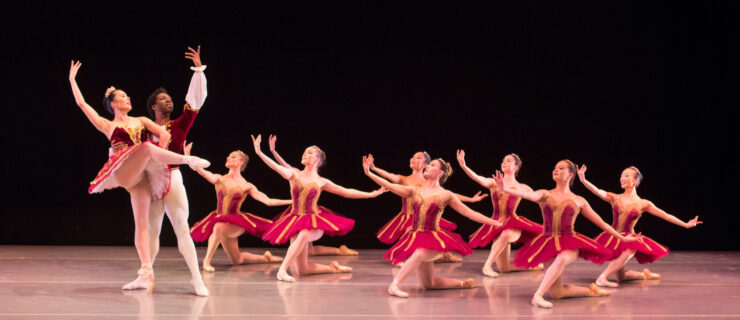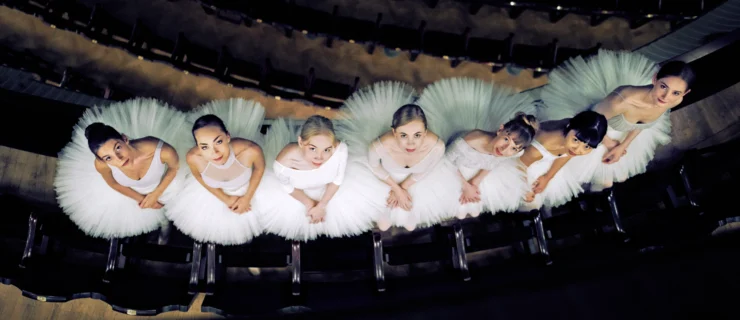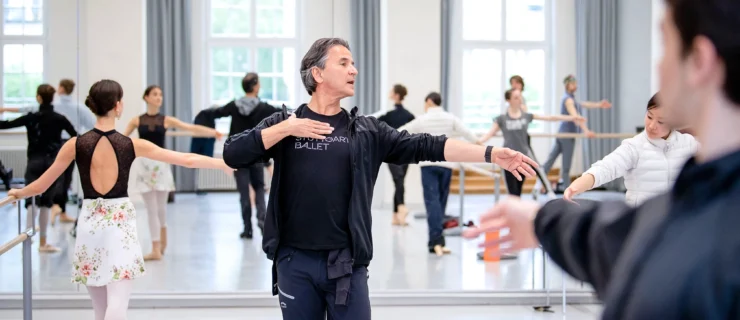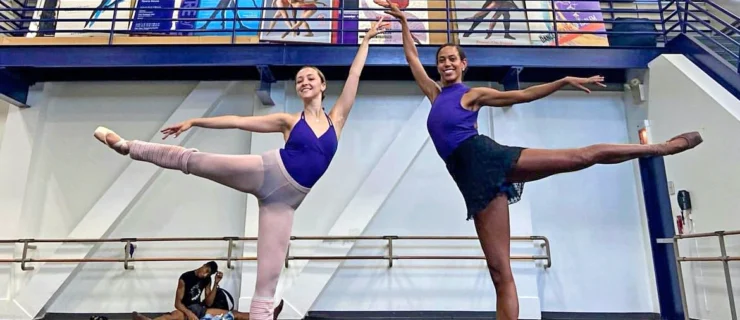Looking Back
My dance training has had many phases. My mother danced into her 20s and knew how difficult a professional career could be. So to save me from heartbreak, she steered me towards gymnastics when I was 6. But that summer I attended a camp that included ballet—and loved it. My mother relented and enrolled me in the local Royal Academy of Dance school. I quickly learned to show up on time in proper dress, be quiet in class, pay attention to the teacher and stop fidgeting.
Soon I got serious. Like many 8-year-old girls, it happened after seeing The Nutcracker, in my case at Boston Ballet. I enrolled in the company school and worked my way into a preprofessional track. I had good teachers and wonderful opportunities—I was a little Nutcracker lamb my first year—but I was one of many, and didn’t get the attention I hoped for.
I knew I had some ability, but there were lots of girls who had more. I wasn’t the most flexible, but was flexible enough. Not the strongest, but strong enough. I didn’t have the best legs and feet, but what I had would do. I knew that if I were to amount to anything as a dancer, I would have to work especially hard with teachers who also were willing to work with me.
The summer I turned 10, I took a weekend ballet course with Jacqueline Cronsberg at Ballet Workshop of New England, her school outside of Boston. It was clear to me shortly after taking her classes that I belonged there. So I left the glamorous world of Boston Ballet to study Balanchine technique in a small suburban school. It felt strange at first, but the attention I got made it worth it.
There was something about Balanchine technique and Ms. Cronsberg’s teaching style that made sense in my body immediately. The musicality of Balanchine movements felt as natural to me as breathing, yet so feminine and elegant. I could use my native talents and decent facility to really begin to move. A turning point came when I realized I could do more than remember choreography: I was learning to dance.
I spent many hours in the studio alone with Ms. Cronsberg; it was my favorite time as a student. I would arrive after school and we would work on my bourrées for an hour, going every which way across the floor. She was incredibly patient and nurturing and cared for each of her students. She also knew when to let us go. She made sure we went away to summer intensives—I spent three summers at Chautauqua with Jean-Pierre Bonnefoux and Patricia McBride. She took us to New York City on weekends, where I studied with Willy Burmann and learned the role of Terpsichore in Apollo from Allegra Kent.
When I turned 15, Ms. Cronsberg told me it was time to join a company. Through her contacts, I auditioned for the Royal Danish Ballet in Copenhagen, which offered me an apprentice contract. I had performed many leading roles with Ms. Cronsberg’s Massachusetts Youth Ballet, so I was already comfortable onstage. Only a few short months after I arrived in Copenhagen, however, I was cast as Juliet in John Neumeier’s version of Romeo and Juliet. I look back and see how pivotal that was in my career. It shaped my understanding of what it meant to dance a role—that being onstage has a dimension beyond mastering the choreography. That opportunity led me to a soloist contract with San Francisco Ballet when I was 17.
Now I’m still training, still learning to be an artist. It is difficult to maintain the technique that took years for me to develop because rehearsals and performances fill my schedule. It’s easy to let my daily company class become a warm-up when it really should be a way to continue my learning and development. I have to constantly remind myself that I am always aiming to improve in class, just as I try to improve in rehearsals and onstage. It takes all three to become an artist.
For someone trying to discover what kind of training is the right fit, my advice is only that you will know when you find it. If your love for dance is there, then working hard in class isn’t a struggle. I hope you are lucky enough to find someone like Ms. Cronsberg, and get an opportunity to experience something like the time we spent building the professional dancer I was going to become.
Sarah Van Patten is a principal dancer with San Francisco Ballet.





